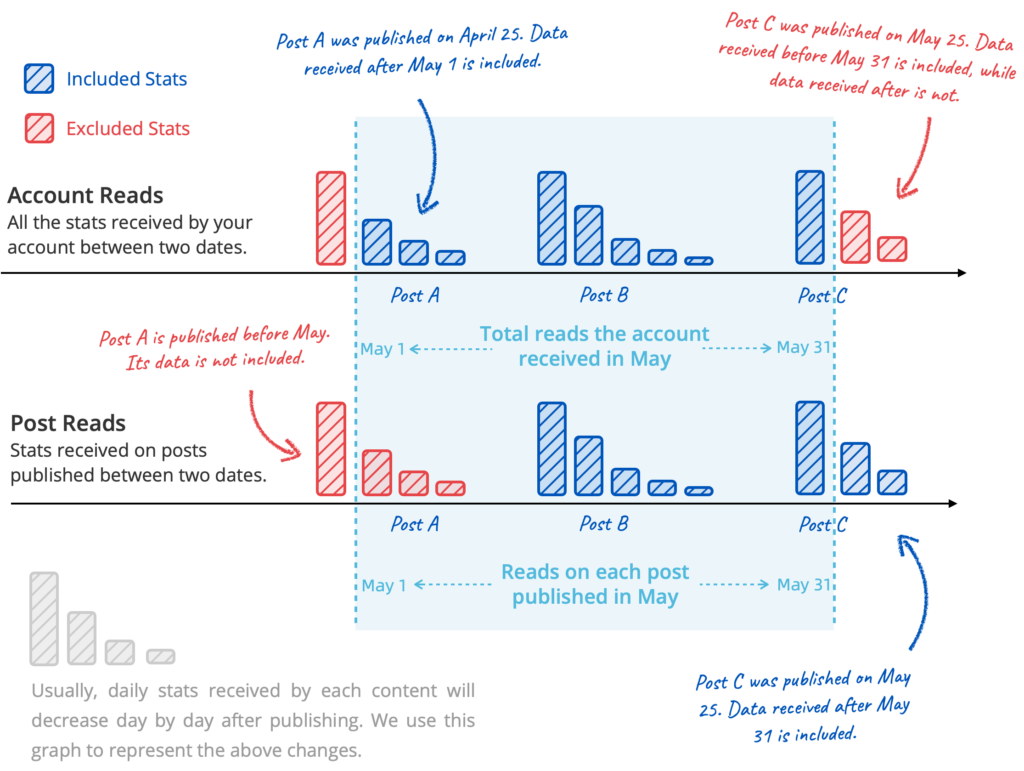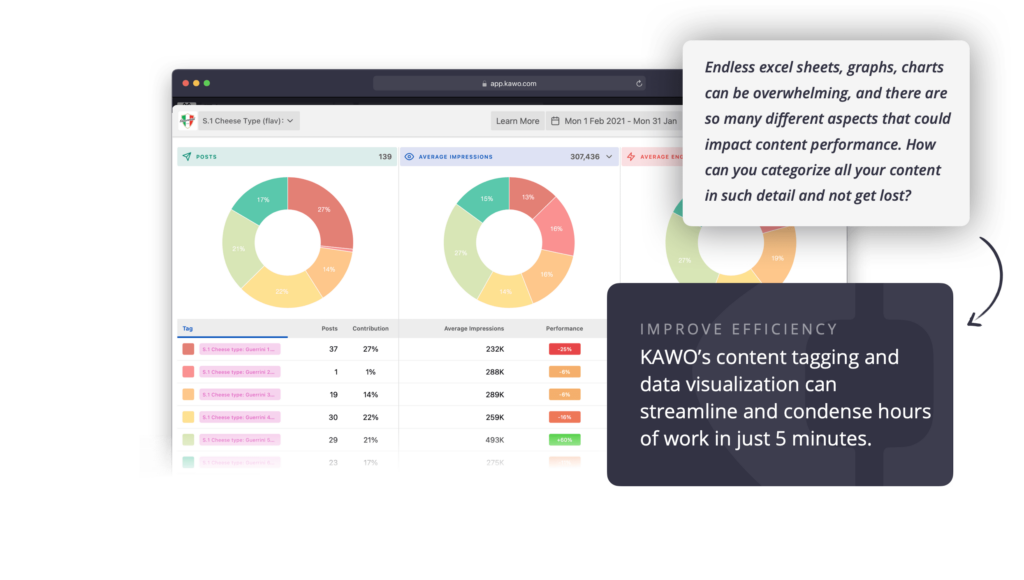It’s important to prioritize. Setting and tracking too many KPIs will overwhelm you with data and cause confusion.
It’s difficult to set an fixed number of how many KPIs a business, a team or one employee should have in any given industry. Company structure is unique, but according to general practice and professional advice, having between two to four KPIs per goal is recommended [S] .
How to Set up Your Social Media KPIs Correctly?
1. Make sure KPIs are connected to your goals
A sports brand that entered China three years ago wished to improve brand awareness, and it set “reads” on social as its core KPI at first.
“The potential problem is that we were trying to find local fans for our brand, not just reads per content. It’d be easy to hit the KPI, had we just chosen all topics to be what audiences are interested in but not tightly connected to our brand, while the latter is an equally important metric. As we were trying to find a balance, the KPI at the time lost its purpose.”
—— manager of the brand’s social media team
2. Make KPI assumptions based on past performances and industry benchmarks
Being too ambitious and setting unrealistic goals will incentivize a toxic culture of manipulation to reach the target without considering the long-term gain. It’s also important to take into account each brand’s unique positioning when referring to benchmarks.
3. Breakdown the details of each KPI
There should be individual audience acquisition or conversion goals set for each channel. In each channel, performance can be delegated to different types of content. For example, five pieces of TOF content with KOLs should each reach 10,000 reads, while 10 MOF content pieces on new products should reach 500 reads each. It’s important to count on front-line staffs’ hands-on experience and challenges while ironing out these details.
4. Monitor challenges and update consistently
All predictions will be impacted by unforeseen variations. Breaking down an entire period like a year into monthly or seasonal time blocks and closely monitoring each stage can help you find problems early on and adjust your strategy.
The assessment for each small period should also take into account the industry’s nature. For example, sports brands have a whole year set around the Super Bowl, while beauty products revolve around big shopping festivals, so the periods without these activities will naturally perform lower. Connect short-term goals with long-term health.

Know How to Calculate Your Stats Correctly
Each social platform has an official backend for brands to acquire account data. It’s important to know what the set of data consists of before measuring metrics, otherwise the margin of error will be too great for analysis.
For example, data from the WeChat backend is available in two ways: account data and post data — this can be confusing. Take post data for example: It lists all the posts the brand published within a specific time frame (e.g. during May), and then shows the stats each post has received until the collection date.
If post C (published on May 25, as shown on the right) received 5000 reads before May 31, and an additional 3000 reads after June 1 until now, the reads on post C will be 8000 (5000+3000) when the brand checks post stats in May. The number will also stay the same if the brand checks in May and June. If the marketer in charge of collecting data isn’t aware of this, mistakes will be made when doing an analysis.

How to Measure Content Performance with Metrics
Correctly analyzing metrics can help brands evaluate efforts more effectively, and understand existing audiences better.
Let’s use a beauty brand as an example: Its different Weibo content categories to raise brand awareness and grow the audience are shown in the graph on the right. To gain insights, the brand should:
1. Collect all data from the content and separate into the previously defined content categories;
2. Drill down into the details, draw conclusions and make adjustments to the content strategy:
A. Measure how different content performed relative to the average for its category;
B. Measure if the performance of each content category reached expectations (example 1);
C. Measure the influence of different variations in each content category (example 2).

*The performance of an entire category can be impacted by one or two anomalies, remember to use “median average”, which will reduce the error margin effected by these posts.
Tips to Analyze Metrics Correctly
1. Select appropriate metrics to assess different types of content. Controversial content will naturally attract more comments than educational content, but both play an important role in your content strategy.
2. Isolate impact of paid/promoted content from organic by looking at them separately or highlighting the difference in reporting.
3. Factor into your analysis the amount of effort required for different types of content. Making a video can take hours for an entire team while a simple repost on Weibo takes only minutes.
4. It’s important not to base your analysis on too little data. One or two successful posts can have an outsized impact on the performance of an entire category. If you don’t post very frequently ensure you use data from more posts over a longer time period.
Having an integrated assessment
Example: When a content creator in the sports section left a marketing agency, suddenly all likes on posts dropped. People looked back at the old posts and discovered that the person simply added “if you like the team, like the post” in the end of all content as bait to get more likes. “Like” alone is easily manipulated and doesn’t host much value in strategic guidance on Weibo. The problem would’ve been found earlier if ratios among “like, comment, and repost” were tightly monitored.
If some of your content receives high engagement but followers are growing slowly, it’s possible that the viewers are not impressed by your account as a whole when they check your content history, and it might be time to re-assess your content strategy.

If you are interested in more detailed breakdown of metrics and our first-hand interviews with marketers and professionals, feel free to download KAWO’s Guide to China Social Metrics to learn more.







